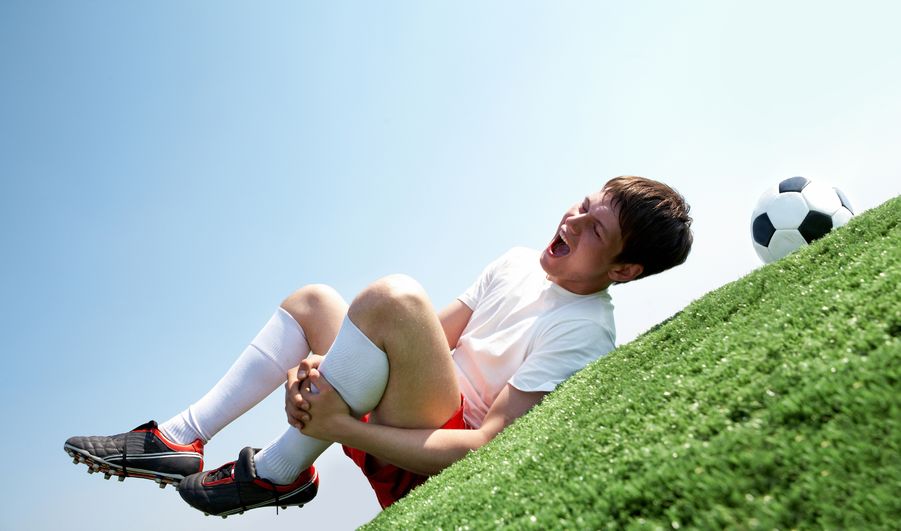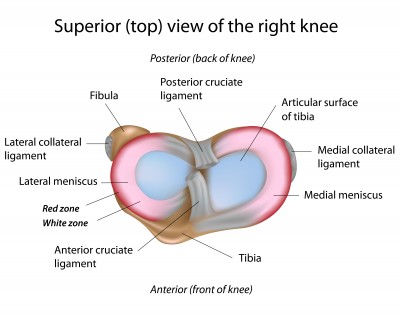Meniscus Injuries

Injuries to the knee happen often and in every walk of life. One common knee injury that Physical Therapists treat on a daily basis is a torn meniscus.
There is no specific age group that is more susceptible to these kinds of injuries. The younger athletic person usually damages the meniscus during competition due to high impact jumping or quick changes in direction. Contact sports and direct blows to the knee can cause similar damage. As we age, the suppleness of the fibrocartilage begins to wane and a simple squatting maneuver can cause enough compression and/or sheer force to tear the meniscus.
In some cases, a physical therapy based rehabilitation program can help the torn meniscus heal without surgery. If surgery is required, the physical therapist can work with surgeons to help patients recover from surgery and return to full function and activities.
The Anatomy of the Knee
The knee joint is made up of two long bones (Femur on top and Tibia on the bottom) and the knee cap or patella in the front. The Femur and Tibia have smooth articular cartilage (hyaline) on the ends designed to reduce friction when the two bones move upon themselves.

Sandwiched in between the two bones and situated along the outer edge of the top of the Tibia are the menisci. They are “C” shaped and made of hard, fibrous cartilage. These fibrocartilage menisci absorb shock during weight bearing activities and increase the congruency of the “fit” of the bottom of the Femur and the top of the Tibia.
Compression Force and Shear Force
When people are active and are weight bearing, there is a tremendous amount of compression force in the knee joint. As the bones move, a sheer force across the articular surface is created. If either or both of these forces become too great, they can cause damage to the menisci. If the joint is subjected to abnormal levels of either force, the damage can occur to the menisci in the form of a “tear.” Most acute knee injuries involve just the inside (medial) or outside (lateral) meniscus, but there are times when both are involved and must be treated to restore full function.
Treating a Torn Meniscus
While in some cases, the meniscus will heal on its own, the Physical Therapist is well trained to help patient by developing exercise routines and using modalities to decrease swelling and increase blood flow to stimulate the healing process. The Physical Therapist can also help patient restore full motion via specific stretching and mobilization techniques.
If the meniscus does not heal on its own and the patient has to have surgery, the Physical Therapist will work closely with the surgeon to fully rehabilitate the patient’s surgically corrected knee. A thorough rehabilitation program designed by a Physical Therapist can restore the full function of the patient’s injured knee and enable them to completely return to their pre-injury lifestyle.



























I had knee injury berofe 2 and half years ago then it showed ACL tear and complex tear of the body and posterior horn of the medial meniscus. Then I managed up to now. Now I am asked for medial meniscus repair. But as this moment, I can walk well for 4kms nicely. But when I walk fast, sometimes my leg gets twisted and pain starts in joint.By putting on knee cap it does not seems to have any problem while walking. Please advise me what to do. I am now 60 yrs